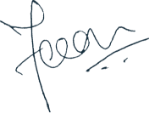The Five Pillars of Scaling Learning

At the Academy for Engineering we are tasked with celebrating SAP’s engineering pride. It is a return to our roots, to the engineering culture that makes SAP, SAP.
Our approach is to curate and co-create a small portfolio of world-class, immersive, six-month programs, one each for each key actor in the engineering ecosystem: engineer, manager and architect.
With an engineering population of 30,000 engineers across different roles, we think of shifting culture like nuclear fusion. We create a small number of potent graduates who live our core values of courage, curiosity, compassion, community and craftsmanship and become role models for those around them, setting off a chain reaction.
We believe value contagion, like emotional contagion, is possible. When we reach critical mass, i.e. roughly 8% to 21% of the engineering population, the chain reaction will become self-sustaining, with the number of engineers who choose to accept our values outpacing the number who actively resist or gradually lose interest in them.
Our programs are world-class, small-batch and high-touch. While this seems like the polar opposite of learning experiences in most corporate settings, we believe scaling learning requires you to blanket your community both broadly as well as deeply; the first creates awareness, while the second creates transformation. Learning and development units specialize in going broad with low-touch, high-scale learning experiences, while we invest in going deep with high-touch, high-intensity immersive experiences.
Working in this style brought up some peculiar paradoxes. We are niche, but with ambitions of adoption across our population; high-touch, but with a strong focus on creating scalable elements that others can adopt; we want to differentiate, but we also want to be widely imitated; we believe in the power of transformative experiences, but we want data to prove that the transformation has lasted. Above all we want to help SAP return to the values which made us great, but we also want to create engineers of the future.
We deal with these paradoxes by having a core set of principles that guide us in this journey.
Innovation has no value without a focus on maintenance
In the early stages of creation, innovation feels like fun. When switching and stabilizing for scale, however, it is only when you focus on maintenance that you truly learn how your product works.
As you go over the original assumptions and factor in feedback you see flaws you could not in the heat of creation. You make ongoing tiny improvements, which create an aura of reliability. Maintenance and reliability are two sides of the same coin.
Repeat existing things, continuously improving your craft
We focus on repetition and efficiency, finding and removing friction we initially missed: automating steps; upgrading the quality of our analytics, and using peer pressure instead of reminders to generate compliance.
In response to COVID, we pivoted like everyone else to a fully virtual model of learning and realized that it offers benefits that are impossible in a physical environment. We can meet for shorter durations, over a longer period, leading to better immersion and retention. We intend to retain these gains even after we start meeting in person.
Improve things that Create Value; Stop Things that Don’t
Waste is a natural side-effect of innovation in the early stages. When switching and stabilizing for scale, however, we ruthlessly eliminate any actions that dilute value.
We regularly try out new tools and platforms, adopt and recommend those that show promise, and give honest, direct feedback for those that do not — the latter being something that most companies actually value.
Measure and Create Evidence (but remember Goodhart’s Law)
You need to measure and create evidence of value. Moving from qualitative to quantitative measures has two challenges. The first is the fallacy of concreteness: because you can measure something, you are likely to believe it has value. We counter this by thinking from first-principles on what is a true measure of value.
The second is Goodhart’s law. Simply put, outcomes and measures are not the same thing. As soon as you introduce a measure, you are liable to make that the target and game the system, rendering the measure worthless.
We measure the effect of growth in our managers on their team, and using the compiled data, create a growth report for each manager. The data both validates the impact of our program and reflects the manager’s natural strengths.
Protect the Unscalable, Scale the Shareable
If you prove value and establish credibility, you get noticed, appreciated and imitated. We differentiate our unscalables from our shareables. We encourage imitation by making our methods freely available: How we find and pick talent, how we measure success, how we craft curriculum and more.
Simultaneously we protect against replication by carefully controlling the “feel” of our programs. It is hard to replicate who we are, what we value, and how we interact with our learners.
In the end, true differentiation comes from the combination of the purpose, values and culture of the team and manifests in the quality and intensity of energy they bring to every task. It is the spirit behind the ideas, rather than the idea itself, and is as unique as one’s fingerprint.

